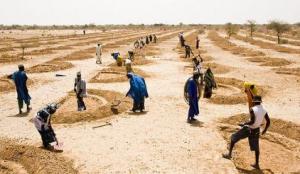7th Africa Working Group Meeting on Disaster Risk Reduction
Africa this week launches a global drive to apply the new Sendai Framework for Disaster Risk Reduction, a 15-year international roadmap that seeks to make the world safer from natural and man-made hazards.
The talks from Tuesday to Thursday in Cameroon’s capital Yaoundé bring together representatives from four dozen governments, Africa’s Regional Economic Communities, the African Union and a swath of UN and other international organizations.
While the goal is to align Africa’s existing programmes with the Sendai Framework, the gathering has wider implications, marking the first inter-governmental meeting to put the new pact into action since its adoption in March at the World Conference on Disaster Risk Reduction.
“Africa has a chance to set the tone for the global future of disaster risk reduction,” said Margareta Wahlström, Special Representative of the UN Secretary-General for Disaster Risk Reduction.
Underlining the session’s importance, it has two parts. The 7th Africa Working Group Meeting on Disaster Risk Reduction on Tuesday and Wednesday will be followed on Thursday by the 4th High Level Meeting on Disaster Risk Reduction, drawing ministers and other senior officials. The latter is due to issue a declaration calling on the African Union to steer a continent-wide Sendai Framework alignment, and for regional and national plans to likewise match the new agreement.
The Sendai Framework has four priorities: improving risk governance, understanding disaster risk, investing in resilience and enhancing preparedness for effective response, recovery, rehabilitation and reconstruction.
Its impact up to 2030 and beyond will hinge on meeting seven global targets, including substantial reductions in disaster mortality, numbers of people affected, economic losses and damage to critical infrastructure.
